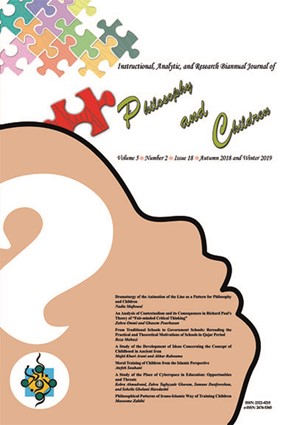-
-
List of Articles
-
Open Access Article
1 - Question
Zohreh Hosaini Khamenei -
Open Access Article
2 - Dramaturgy of the Animation of the Line as a Pattern for Philosophy and Children
Nadia Maftouni -
Open Access Article
3 - An Analysis of Contextualism and its Consequences in Richard Paul’s Theory of “Fair-minded Critical Thinking”
Zahra Ommi Ghasem Pourhasan -
Open Access Article
4 - From Traditional Schools to Government Schools: Rereading the Practical and Theoretical Motivations of Schools in Qajar Period
Reza Mahuzi -
Open Access Article
5 - A Study of the Development of Ideas Concerning the Concept of Childhood in Ancient Iran
Majid Khari Arani Akbar Rahnama -
Open Access Article
6 - Moral Training of Children from the Islamic Perspective
Atefeh Souhani -
Open Access Article
7 - A Study of the Place of Cyberspace in Education: Opportunities and Threats
Kobra Ahmadvand Zahra Taghyzade Ghavam Samane Dastforoshan Soheila Gholami Haredashti -
Open Access Article
8 - Philosophical Patterns of Irano-Islamic Way of Training Children
Masoomeh Zabihi
-
The rights to this website are owned by the Raimag Press Management System.
Copyright © 2017-2025







